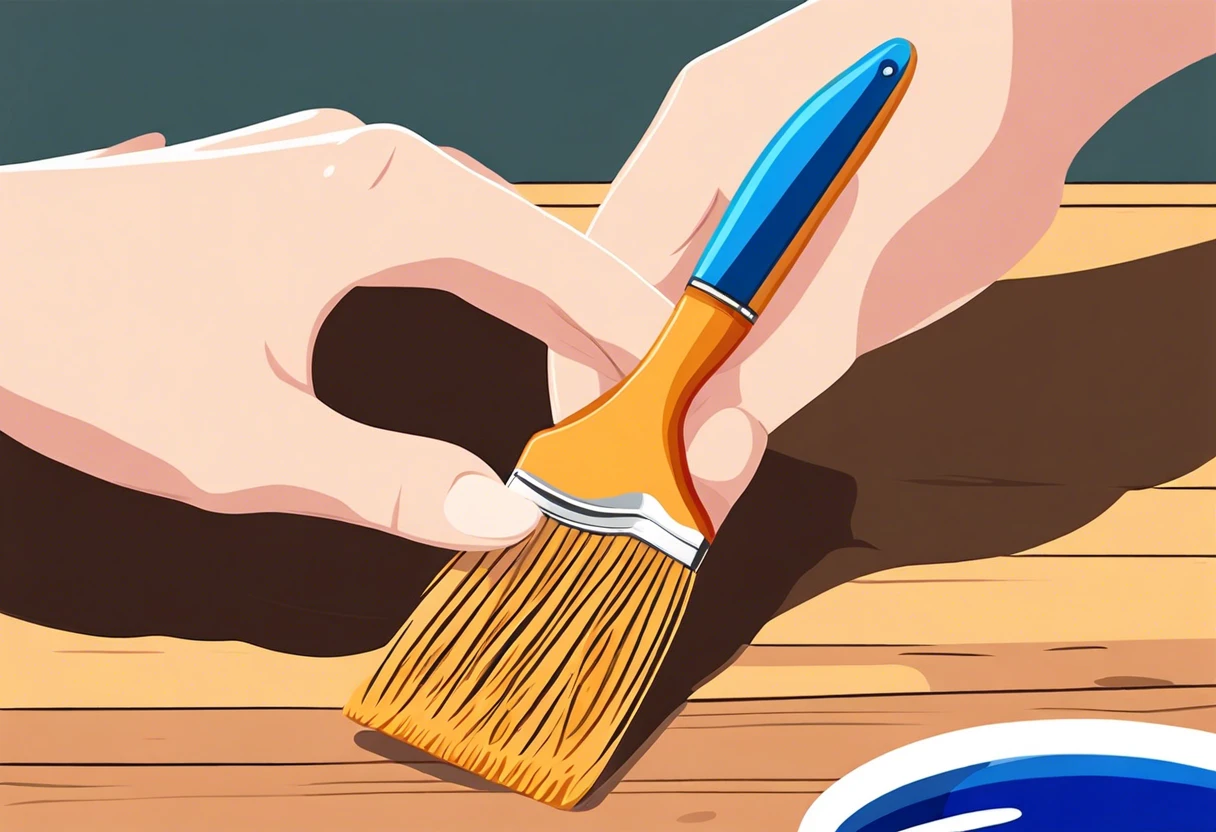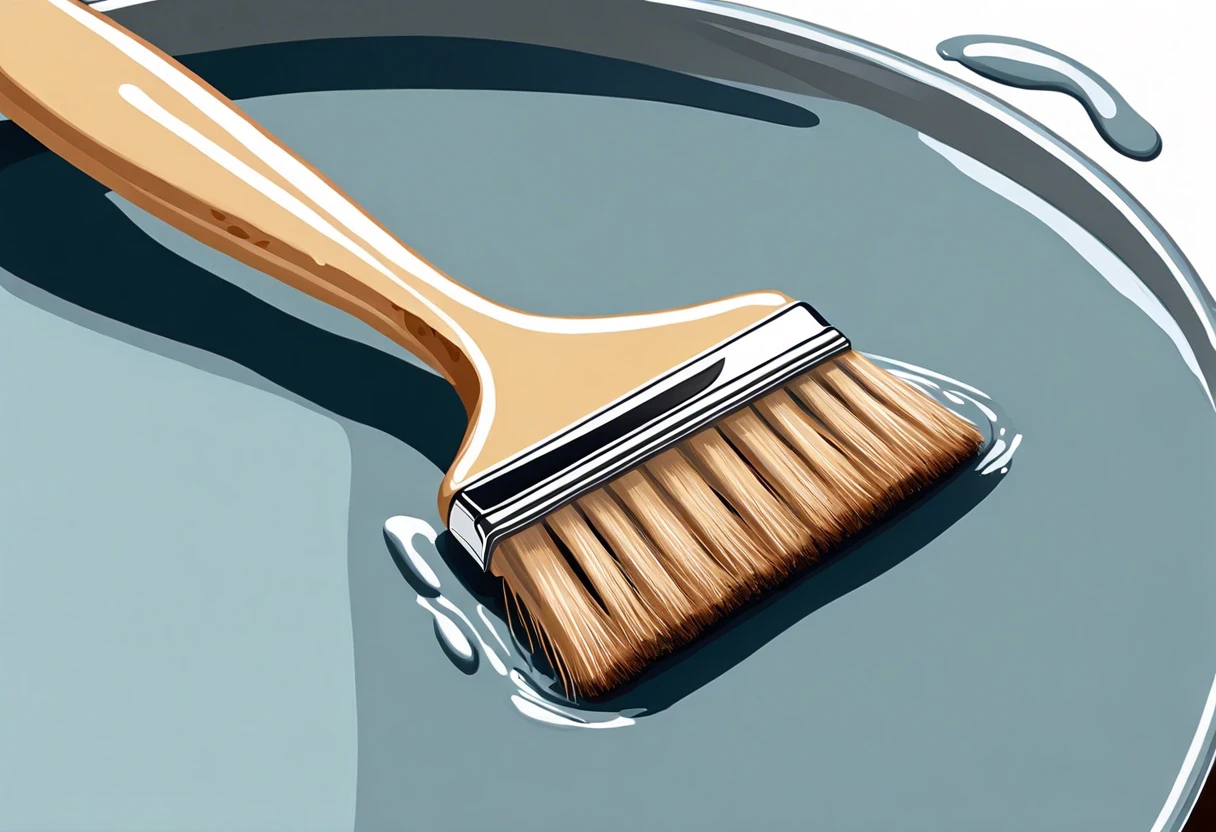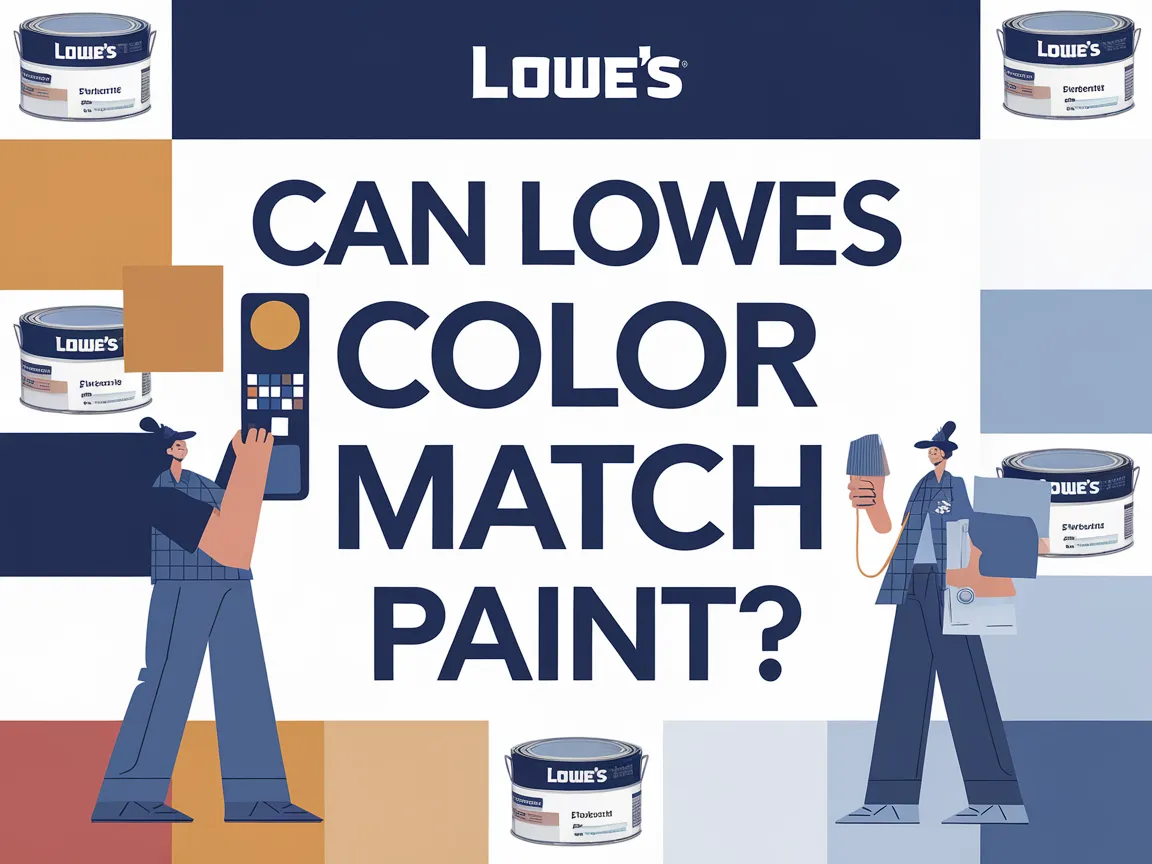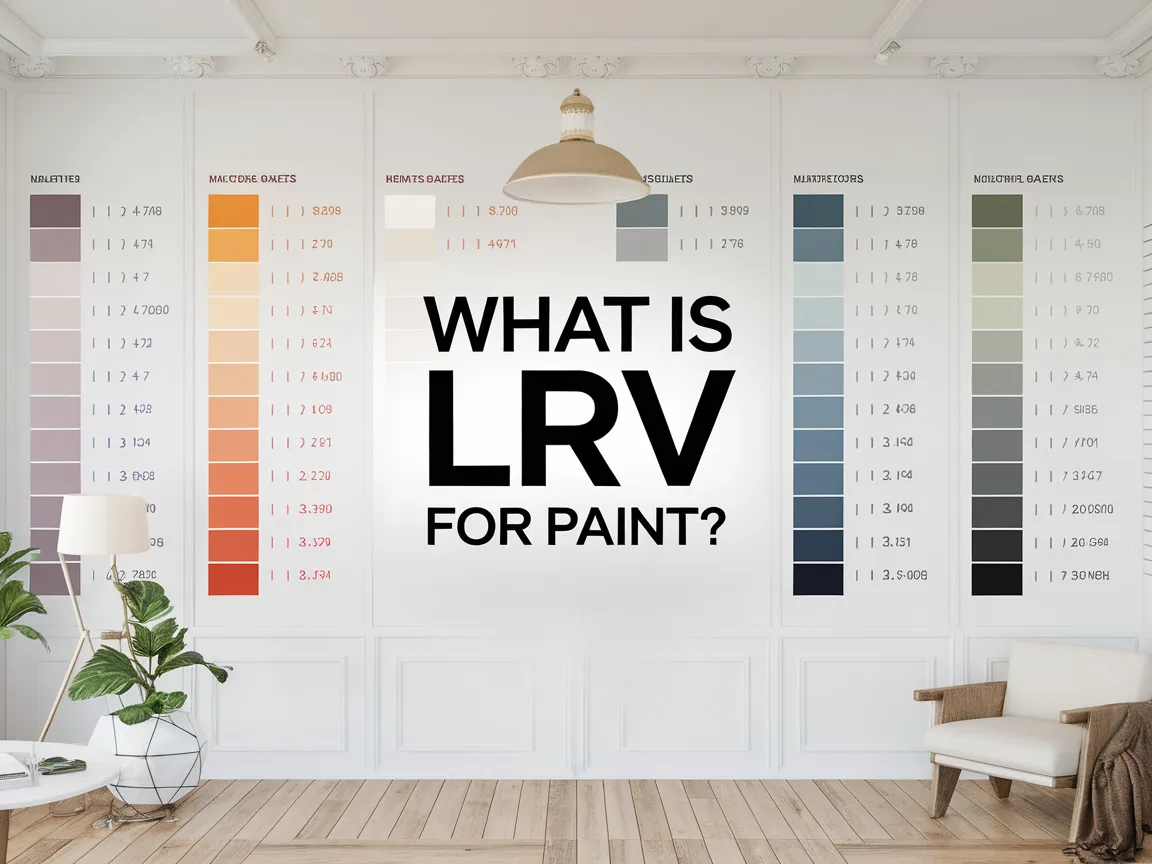Can You Use Water Based Paint Over Oil Based Primer?
Published on: November 17, 2025 | Last Updated: October 1, 2025
Written By: paint_answered
Primer is like a magic coat for your surfaces. It helps paint stick better and makes everything look smooth and pretty!
So, can you use water based paint over oil based primer? It’s super important to get this right, or your paint job might not turn out well. I’ve learned from experience that using the wrong paint can ruin a beautiful project, so let’s dive into this topic.
In this article, we’ll cover what primer is, essential tips before starting, steps for applying water-based paint over oil-based primer, recommended color palettes, types of paint options, factors that affect application, common problems you might face, finishing touches for a pro look, and some fun DIY project ideas. Plus, we’ll answer your burning questions like can you put oil paint over water based paint and how to tell oil based paint from water based paint.
Contents
- 1 Can You Use Water Based Paint Over Oil Based Primer?
- 2 What is Primer and Its Importance in Painting?
- 3 Before You Start: Essential Tips for Success
- 4 Steps to Successfully Apply Water-based Paint Over Oil-based Primer
- 5 Key Considerations for Using Water-Based Paint Over Oil-Based Primer
- 6 Testing Adhesion: How to Ensure Compatibility
- 7 Benefits of Using Water-Based Paint Over Oil-Based Primer
- 8 Comparison Table: Water-Based vs. Oil-Based Paint
- 9 Types Of Paint Options for Application Over Oil-based Primer
- 10 Factors Affecting the Use Of Water-based Paint Over Oil-based Primer
- 11 Common Issues When Applying Water-based Paint Over Oil-based Primer
- 12 Finishing Touches: Ensuring a Professional Look
- 13 DIY Project Ideas for Using Water Based Paint Over Oil Based Primer
- 14 FAQs About Using Water Based Paint Over Oil Based Primer
- 15 Conclusion: Achieving Beautiful Results With the Right Technique
- 16 Additional Resources
Can You Use Water Based Paint Over Oil Based Primer?
Yes, you can use water-based paint over an oil-based primer. Just ensure the primer is fully cured, which usually takes about 24 hours. Lightly sand the primer surface for better adhesion. This helps the paint stick well and look great! If you’re curious about specific paint matching techniques between different brands, check out paint color matching strategies.
The Finishing Touch
A freshly painted wall is a blank canvas. The best way to bring your room to life is with a single piece of statement art that ties everything together.
Browse Wall Art at Big Wall DecorWhat is Primer and Its Importance in Painting?
Primer is a preparatory coating applied to surfaces before painting. Typically, primer contains specific compounds, like titanium dioxide (25% to 30% Concentration), to enhance adhesion and provide an even base for the topcoat. If you’re curious about unconventional painting techniques, you might want to explore painting carpet for unique surfaces.
You might wonder, can you use water-based paint over oil-based primer? I tried this at a friend’s house, and it led to a conversation much deeper than just the paint choice.
I often use it for my DIY projects, where the right primer makes or breaks the outcome. That experience taught me the crucial role of primer; it not only blocks stains but also prevents topcoats from peeling. Related questions arise, like can you paint water-based paint over oil-based primer, which can save you a lot of headaches! If you’re looking to tackle more challenging surface transformations, painting a bathtub surround requires similar precision and preparation techniques.
Before You Start: Essential Tips for Success
What do you need to prepare for using water-based paint over oil-based primer?
- Oil-based primer: Use a quality oil-based primer like Zinsser Cover Stain. It provides a waterproof barrier for your water-based paint.
- Sandpaper: Use 120-grit medium sandpaper. This is crucial for dulling the glossy surface to ensure proper adhesion.
- Cleaning solution: Get a degreaser like Krud Kutter. It’s necessary to clean the surface and remove impurities for a smooth finish.
- Drop cloth: An inexpensive drop cloth is essential. It protects your floors from spills and simplifies cleanup.
You should now have a good understanding of essential tips for success. In the next part, we’ll discuss how to apply water-based paint over oil-based primer.
Also See: How Can You Get Rid Of Paint? Easy Disposal Methods

The Finishing Touch
A freshly painted wall is a blank canvas. The best way to bring your room to life is with a single piece of statement art that ties everything together.
Browse Wall Art at Big Wall DecorSteps to Successfully Apply Water-based Paint Over Oil-based Primer
Now, we’ll cover the steps for applying water-based paint over oil-based primer. Follow these closely for the best results!
-
Clean the Surface Thoroughly
Start by washing the surface with a mix of water and mild detergent. This removes grease, dirt, and debris, as a clean surface helps the paint stick better.
After cleaning, rinse with water and let it dry completely. Aim for a drying time of 1–2 hours in a well-ventilated space to ensure all moisture is gone.
-
Sand the Primer
Use fine-grit sandpaper (Around 220 Grit) to lightly sand the oil-based primer. Scuffing it creates a better texture for the water-based paint to adhere to.
After sanding, clean off any dust with a damp cloth or vacuum. Don’t skip this step; proper surface prep is key for a smooth coat.
-
Apply a Coat Of Bonding Primer
Choose a quality water-based bonding primer for the sanded surface. It’s specifically formulated for these applications and boosts paint adhesion, providing a smoother finish.
I’ve learned that using this special primer greatly reduces the risk of peeling later on. Invest that minimal extra time; it pays off!
-
Paint With Water-based Paint
Once the bonding primer dries—usually in 1–2 hours—you’re ready for the water-based paint. Use a good-quality paintbrush or roller for even coverage.
Apply one to two coats, letting each coat dry fully between applications—about 2–4 hours, depending on humidity and temperature. Always check your paint’s specific instructions, as drying times might vary. Professional painters often recommend specific techniques for optimal coverage, which is why many artists explore painting techniques Bob Ross used.
We have now covered the steps to effectively apply water-based paint over oil-based primer. Next, we will discuss important considerations.
Key Considerations for Using Water-Based Paint Over Oil-Based Primer
Before you dive in, let’s go over some key considerations that can make or break your project.
- Surface Texture: The smoother the surface after priming, the more effort you’ll need to ensure water-based paint sticks. A little texture helps with adhesion!
- Temperature and Humidity: Ideal application conditions are between 10-32°C (50-90°F) with humidity less than 70%. This helps the paint cure properly.
- Quality of Primer: Not all oil-based primers are created equal. Choose high-quality primers to avoid adhesion issues later.
- Painting Techniques: Use even strokes and avoid overworking the paint. This prevents bubbles and drips for a smoother finish.
That covers important factors for using water-based paint over oil-based primer. Let’s now take a look at adhesion testing methods.
Testing Adhesion: How to Ensure Compatibility
Want to avoid nasty surprises? Here’s how to check if your water-based paint will adhere well.
- The Tape Test: Apply a piece of painter’s tape over the dried primer, then peel it off. If the primer comes away, you need to rethink your approach.
- Scratch Test: Use a coin or your fingernail to lightly scratch the surface. If it scuffs easily, consider additional preparation like sanding or priming again.
These tests can save you from a less-than-stellar finish. It’s always better to be safe than sorry!
You should now have a good understanding of testing adhesion and ensuring compatibility. In the next part, we’ll discuss the advantages of water-based paint over oil-based primer.

Benefits of Using Water-Based Paint Over Oil-Based Primer
Let’s explore the perks you get when you choose water-based paint over an oil-based primer.
-
Quick Drying Time
Water-based paints dry much faster—usually within 1-2 hours. This makes your project a breeze!
-
Ease of Cleanup
No need for solvents! Just soap and water, which is way more convenient.
-
Low Odor
Water-based paints have a milder smell than oil-based ones. Perfect for indoor projects!
-
Environmentally Friendly
These paints often contain fewer volatile organic compounds (VOCs), which are better for the planet.
Comparison Table: Water-Based vs. Oil-Based Paint
This table shows the main differences between water-based and oil-based paints. It’s handy when deciding which to use!
| Feature | Water-Based Paint | Oil-Based Paint |
|---|---|---|
| Drying Time | 1-2 hours | 6-8 hours |
| Cleanup | Soap and water | Mineral spirits |
| Odor | Low | Strong |
| Durability | Good | Excellent |
| VOCs | Low | High |
Types Of Paint Options for Application Over Oil-based Primer
Let’s explore different types of paint you can use: Water-Based Paint, Oil-Based Paint, Acrylic Paint, and Latex Paint.
-
Water-based Paint
You can use water-based paint over oil-based primer if you properly prepare the surface to ensure adhesion.
-
Oil-based Paint
You can apply oil paint over oil-based primer without issues. This combination results in a durable, smooth finish, perfect for high-wear areas.
-
Acrylic Paint
Acrylic paint is flexible but needs caution over oil-based primers. With proper sanding and priming of the primer’s surface, you can achieve good adhesion.
-
Latex Paint
Latex paint applies well over oil-based primer for dry applications. It’s water-soluble and easy to clean, but requires adequate layer separation; otherwise, it may lift.
Personally, I favor water-based paint for its quick drying time and easy application. It’s more convenient, especially for projects requiring a fast turnaround.
The Finishing Touch
A freshly painted wall is a blank canvas. The best way to bring your room to life is with a single piece of statement art that ties everything together.
Browse Wall Art at Big Wall DecorFactors Affecting the Use Of Water-based Paint Over Oil-based Primer
What factors influence using water-based paint over an oil-based primer?
-
Drying Time: Oil-based primers take longer to dry, which affects the adhesion of water-based paint.
-
Surface Compatibility: The smooth texture of oil-based primers may hinder proper bonding with water-based paints.
-
Temperature: Cooler temperatures can slow drying, risking issues during paint application.
-
Paint Quality: The quality and formulation of paint can enhance or hinder the overcoat process.
Common Issues When Applying Water-based Paint Over Oil-based Primer
Once, my friend tried to paint his living room with water-based paint over an oil primer. He noticed bubbling and peeling—a total headache! It messed with the bond.
To fix this, he had to gently sand the surface, apply a coat of acrylic or latex primer, and wait an hour before repainting. This guarantees a solid finish!
Finishing Touches: Ensuring a Professional Look
After applying your water-based paint over oil-based primer, let it dry for 24 hours. Then, lightly sand rough areas and clean up any dust with a damp cloth.
Inspect the surface for lifted edges or bubbles. Use a second-skin tape, like FrogTape™, to seal boundaries before touching up tricky spots that need extra care.
From one expert to another, use a 1/2-inch (1.27 Cm) synthetic filament brush for fine details. Calculate your paint coverage, aiming for 12–15 m² (130–160 Ft²) per liter (Quart) of water-based paint for optimal application.
DIY Project Ideas for Using Water Based Paint Over Oil Based Primer
Ever thought about revamping old furniture? You can create a stunning vintage-style table by applying water-based paint over an oil-based primer for that sleek finish.
First, clean your piece, apply oil-based primer and let it dry for 24 hours. You can grab a can of water-based paint for about $30 and, including primer and brushes, expect to spend around $50-$70 total within a weekend. If you’re looking to add a creative touch to your project, you might want to explore painting techniques and tips.
If you wanna explore more, consider creating playful wall art using stencils. Just remember, to test a small area for best results. You can totally use a water-based paint and then finish with a clear sealant—perfect for durability!
FAQs About Using Water Based Paint Over Oil Based Primer
What is the Best Way to Prepare Oil-based Primer for Water-based Paint?
To prepare oil-based primer for water-based paint, you should ensure its surface is clean and adequately roughened. This allows better adhesion, which is crucial since poor adhesion can cause peeling or blistering down the line.
Can I Dilute Water-based Paint if I’m Applying It Over Oil-based Primer?
Yes, you can dilute water-based paint when applying it over oil-based primer. Diluting the paint helps it spread evenly and improves flow, but be careful not to thin it excessively, as this can affect coverage. When working with paint thinners, it’s crucial to protect yourself from potential skin absorption risks during painting.
How Long Should the Primer Dry Before Applying Water-based Paint?
It’s best to let oil-based primer dry for at least 24 hours before applying water-based paint. This ensures the primer is fully cured, providing a solid foundation for your paint.
What Happens if I Don’t Use a Primer Before Water-based Paint?
If you don’t use a primer before water-based paint, you risk poor adhesion and uneven coverage. This might lead to paint peeling or flaking, making your hard work ineffective.
Is It Necessary to Use a Specific Type Of Water-based Paint Over Oil-based Primer?
It’s not strictly necessary to use a specific type of water-based paint over oil-based primer, but high-quality satin or semi-gloss paints are recommended. They provide better durability and resistance against moisture compared to flat finishes. If you want to explore more techniques for achieving the perfect paint finish, candle painting techniques can offer unique insights into paint application methods.
How Can I Tell if a Paint is Oil-based or Water-based?
You can tell if a paint is oil-based or water-based by checking its cleanup method. Oil-based paints require solvents like turpentine or mineral spirits for cleaning, while water-based paints simply wash away with soap and water. If you’re planning to paint wooden surfaces, it’s crucial to choose the right type of paint for optimal adhesion and durability. Acrylic paint works well on wood.
How Do I Remove Water-based Paint From a Brush?
To remove water-based paint from a brush, just rinse it in warm soapy water until the water runs clear. This can save you time and money on replacements.
Can I Use Spray Water-based Paint Over Oil-based Primer?
Yes, you can use spray water-based paint over oil-based primer. Just follow the same rules for waiting and preparation to ensure a smooth finish and solid adhesion.
Also See: Can Acetone Remove Paint? Discover Its Effectiveness
Conclusion: Achieving Beautiful Results With the Right Technique
I hope this gave you what you needed regarding using water-based paint over oil-based primer. We covered the importance of primer, essential tips for success, steps for application, various paint options, recommended color palettes, factors affecting your choice, common issues to watch out for, finishing touches, DIY projects, and FAQs about this topic.
In simple terms, yes, you can use water-based paint over oil-based primer if you follow the right steps. Remember, surface prep and using the right products can save you from common pitfalls and ensure a great finish.
For further insights and detailed information, feel free to return to Paint Answers.
Additional Resources
- Loomis, A. (2011). Figure Drawing for All It’s Worth. New York, NY: Titan Books.









